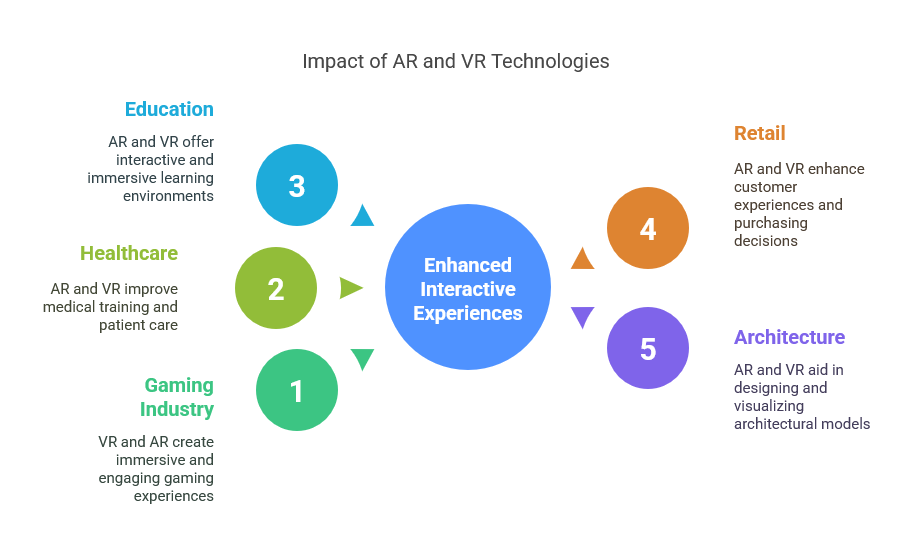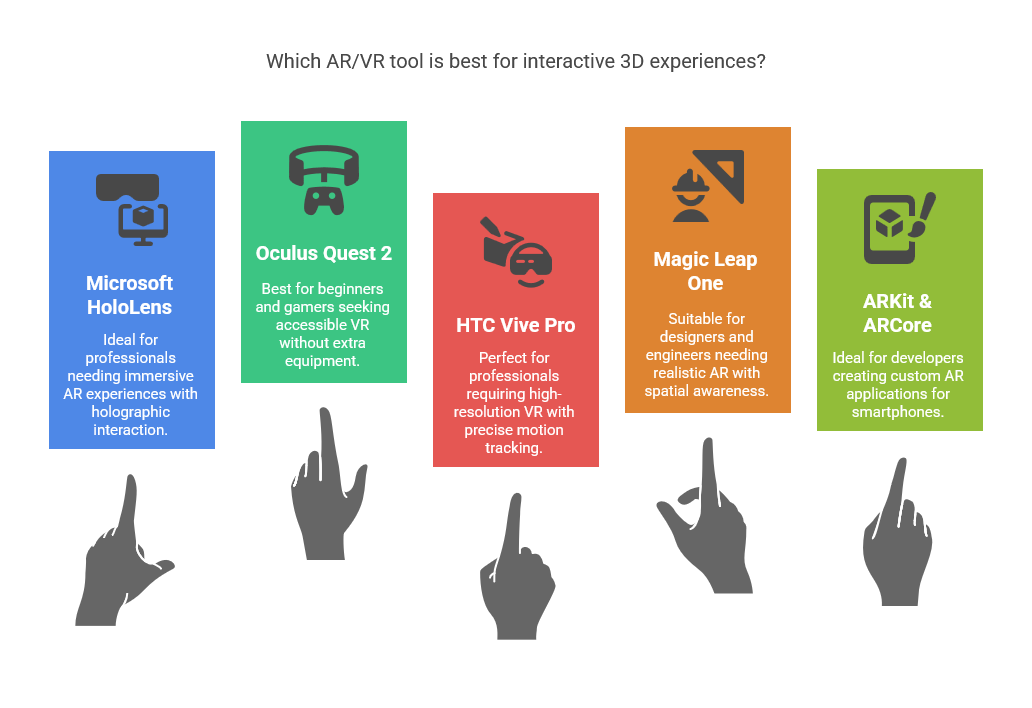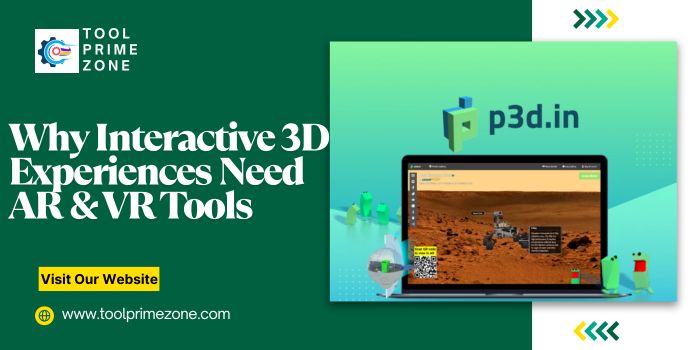In the rapidly evolving world of technology, augmented reality (AR) and virtual reality (VR) are reshaping how we interact with digital content. These technologies, paired with interactive 3D experiences, transform gaming, healthcare, retail, education, and design industries. Whether you’re a gamer looking for an immersive experience, a business owner seeking innovative ways to engage customers, or a learner eager to explore new studying methods, AR and VR offer exciting possibilities. This article will explore the best AR and VR tools for interactive 3D experiences and how they enhance our engagement with the digital world.
The global AR and VR market is on a rapid growth trajectory. Statista states the market is projected to grow from $30 billion in 2021 to $300 billion by 2026. This growth is driven by increasing demand for immersive technologies in gaming, healthcare, education, and other industries.
👍 Get Stunning Lifetime Access Now!
What is Augmented Reality and Virtual Reality?
Before exploring the best AR and VR tools, it’s essential to understand these technologies and how they differ.
-
Augmented Reality (AR): AR blends digital content with the real world. It enhances the user’s environment by superimposing 3D elements on top of it. You can use AR through smartphones, tablets, or specialised glasses. For example, AR applications allow you to see 3D furniture models in your living room or try on clothes virtually without leaving home.
-
Virtual Reality (VR): VR, on the other hand, creates a fully immersive experience. Using a headset and controllers, you’re transported into a completely digital world. VR is used primarily for gaming, training, simulations, and educational purposes. Unlike AR, VR replaces your real-world environment entirely with a virtual one.
These technologies, particularly with interactive 3D experiences, offer unprecedented immersion, allowing users to interact with digital environments in ways that weren’t possible just a few years ago.

The Impact of Augmented Reality and Virtual Reality in Interactive 3D Experiences
AR and VR have had a transformative effect on several industries. Let’s take a look at some of the sectors benefiting the most from these technologies:
1. Gaming Industry
One of the most significant impacts of AR and VR has been in the gaming world. VR gaming offers an entirely immersive experience where players can physically move around and interact with 3D environments. With AR, games like Pokémon overlay virtual characters on real-world landscapes, encouraging users to engage with their surroundings while enjoying the game.
The rise of interactive 3D gaming has created new opportunities for game developers and companies to provide players with more engaging and realistic experiences. VR headsets like the Oculus Quest 2 and HTC Vive are perfect examples of how VR changes the gaming experience.
2. Healthcare and Medical Training
AR and VR technologies are making significant strides in medical training, surgery simulations, and patient care in healthcare. Medical professionals use AR to visualise detailed 3D anatomy models to aid in surgery planning. Conversely, VR helps doctors and surgeons practice procedures in a safe and controlled virtual environment, reducing risks in real-world operations.
According to a report by Deloitte, AR and VR are predicted to save the healthcare industry billions of dollars by improving medical training and patient outcomes. This technology allows medical professionals to better understand complex scenarios before surgery.
3. Education
AR and VR transform education by creating more engaging and interactive learning experiences. Students can experience complex subjects like physics, biology, and history more immersive and hands-only. Virtual reality can take students on virtual field trips, while AR allows students to visualise concepts that are hard to grasp through traditional methods.
For example, students can tour ancient civilisations using VR headsets or even explore the human body in 3D. Such immersive learning experiences are making education more effective and enjoyable.
4. Retail and E-commerce
In the retail industry, AR is being used to enhance customer experiences. Using AR applications, customers can visualise products like furniture or clothes in their own space or on themselves. This allows them to make more informed purchasing decisions, improving satisfaction and reducing returns.
Some companies have already implemented VR technology to let customers explore virtual showrooms, interact with products, and even test-drive cars without leaving their homes. Interactive 3D experiences give businesses an edge by offering personalised and immersive shopping experiences.
5. Architecture and Design
AR and VR are also making waves in architecture and design by providing tools for designers to create and manipulate 3D models. VR allows architects and clients to tour a 3D model of a building before it’s constructed. Meanwhile, AR can overlay a virtual design onto a real-world environment, making assessing how a design will fit into an existing space easier.

The Best AR & VR Tools for Interactive 3D Experiences
Now that we’ve established how AR and VR are revolutionising various industries, let’s look at some of the best AR and VR tools for experiencing interactive 3D environments.
1. Microsoft HoloLens
What It Is: Microsoft HoloLens is a mixed reality device that allows you to interact with holographic 3D models in real time. It’s one of the most advanced AR devices on the market today.
Why It’s Great: HoloLens offers a truly immersive AR experience. You can visualise 3D holograms and interact with them as if they are physically present, making it an excellent tool for healthcare, design, and manufacturing industries.
Key Features:
-
Spatial sound and advanced holographic rendering
-
Gesture and voice controls
-
High-quality environmental mapping
Ideal For: Professionals in engineering, medical fields, and design industries.
2. Oculus Quest 2
What It Is: Oculus Quest 2 is a standalone VR headset that offers high-quality immersive experiences without needing a PC or external sensors. It’s designed for gaming but can also be used for interactive 3D experiences.
Why It’s Great: The Oculus Quest 2 is highly accessible and has many VR games and apps. It’s perfect for beginners who want to explore VR without the hassle of additional equipment.
Key Features:
-
No PC required
-
Wireless setup
-
Extensive game library
Ideal For: Gamers and casual users interested in VR.
3. HTC Vive Pro
What It Is: The HTC Vive Pro is a high-end VR headset designed for professionals. It delivers superior resolution and motion tracking, making it ideal for creating and experiencing interactive 3D environments.
Why It’s Great: The HTC Vive Pro is known for its precise motion tracking and wide field of view. It’s perfect for professional-level VR applications like 3D design, simulations, and gaming.
Key Features:
-
High-resolution displays
-
Comprehensive motion tracking system
-
Compatibility with multiple VR applications
Ideal For: VR gaming, design, and simulation professionals.
4. Magic Leap One
What It Is: Magic Leap One is another AR headset designed to bring digital content into the real world. It allows users to interact with 3D objects in their physical space, making it ideal for design and simulation.
Why It’s Great: Magic Leap One offers high precision and incredible spatial awareness, providing users with a realistic AR experience.
Key Features:
-
Lightweight design
-
Spatial computing capabilities
-
Seamless 3D content integration
Ideal For: Designers and engineers who need to visualise 3D models in real environments.
5. ARKit & ARCore
What It Is: ARKit and ARCore are development platforms allowing developers to create augmented reality experiences for iOS and Android devices.
Why It’s Great: These platforms provide powerful tools for building AR applications that integrate seamlessly with smartphones or tablets.
Key Features:
-
Environment mapping and object recognition
-
User-friendly development tools
-
Real-time rendering of 3D elements
Ideal For: Developers who want to build custom AR applications for smartphones.

FAQs About AR and VR Tools
1. What is the difference between AR and VR?
AR enhances your real-world environment by adding digital elements, while VR immerses you in a wholly digital environment.
2. Can I use VR on my smartphone?
Yes, affordable VR headsets like Google Cardboard allow you to use your smartphone for basic VR experiences.
3. What is the best AR app?
Popular AR apps include Pokémon Go, IKEA Place, and Google Lens, which allow you to interact with digital objects in the real world.
4. How does AR work on my phone?
AR uses your phone’s camera and sensors to detect your environment and overlay digital objects onto the real world in real-time.
5. Is VR safe to use?
VR is generally safe, but users should take breaks to avoid discomfort or motion sickness, especially with longer sessions.
Augmented reality and virtual reality are more than just buzzwords. They are technologies that are revolutionising how we interact with the digital world. With interactive 3D experiences, AR and VR enhance industries ranging from gaming to healthcare and education. As technology continues to evolve, the possibilities for immersive 3D experiences are endless, and the tools we use to access them are only improving.

